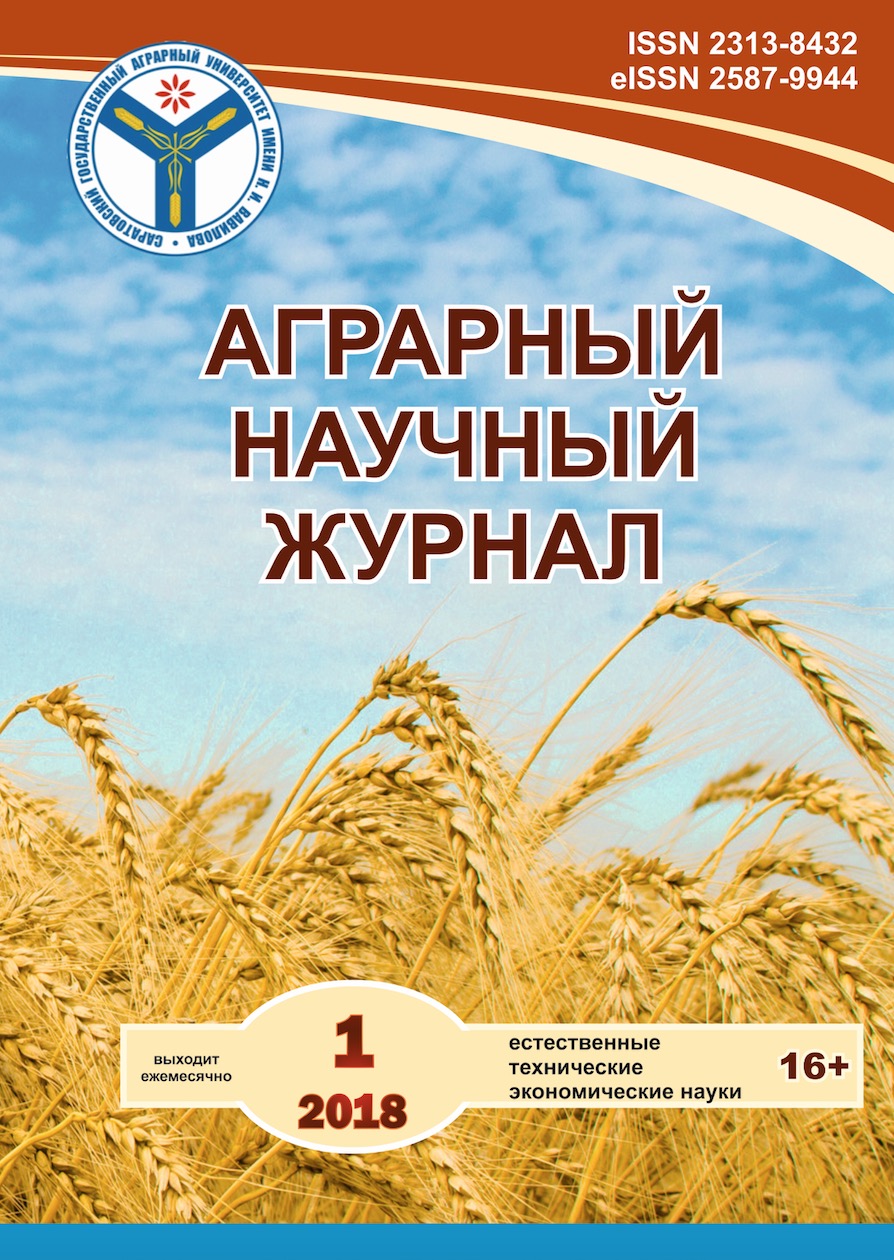PECULIARITIES OF GROWTH AND DEVELOPMENT OF INTRODUCTION OF MISCANTHUS GI-GANTEUS IN THE CONDITIONS OF FOREST-STEP ZONE IN MIDDLE VOLGA
DOI:
https://doi.org/10.28983/asj.v0i1.318Keywords:
introduction of plants, Miscanthus Giganteus, growing conditions, rhizomes, productivity, unstable moistening, structure of the bushAbstract
In the conditions of the forest-steppe zone of Middle Volga on light-gray sandy loam soils, it is carried out work to introduce into the production valuable cellulose-containing and en-ergy culture of Miscanthus Giganteus in order to study the features of the formation of highly productive agrocenoses in the zone of unstable moistening as an economically bene-ficial renewable source of technical resources. Its cultivation is possible on unproductive and erosionhazardous lands. The peculiarities of plant growth and development are re-vealed depending on hydrothermal conditions, since precipitation in the region is a limiting factor, and the need of Miscanthus in them is in the range of 700 mm per year. Meteoro-logical conditions during the years of research were different and the most optimal ones were in 2013 and 2016. Favorable conditions in the year of plantation (2013) contributed to the intensive development of the Miscanthus, and at the end of the growing season the plants reached a height of 180-190 cm. The yield of the aboveground mass was 14.0 t/ha. After wintering, the yield of the plantation of the second year of life increased by 2.1 times, of the third - by 2.6 times in relation to the first year. Due to the far spreading rhizome root system of the Miscanthus, the clamping of plants in the rows occurred, the rows between rows decreased by a factor of 2. In 2016 years. on average, each plant formed 35 stems with a height of 207-230 cm. In 2016 growth processes were more intensive, and the yield of the wet weight was 40 t/ha. The introduction of the Miscanthus Giganteus will allow agricul-tural enterprises to expand the cultural flora of the region with a new bioenergetic plant, which can become an alternative to natural gas and wood for home heating when used in the form of pellets (fuel pellets).
Downloads
References
2. Гущина В.А. Мискантус гигантский – интродуцируемая техническая культура в Среднем Поволжье // Инновационные технологии в АПК: теория и практика: сб. материалов II Всерос. науч.-практ. конф. – Пенза, 2014. – С. 49–51.
3. Гущина В.А., Агапкин Н.Д., Захарова А.В. Проблема интродукции мискантуса в условиях неустойчивого увлажнения // Проблемы и мониторинг природных экосистем: сб. материалов Междунар. науч.-практ. конф. – Пенза, 2015. – С. 52–54.
4. Гущина В.А., Агапкин Н.Д., Борисова Е.Н. Адаптация мискантуса гигантского первого года жизни к условиям Среднего Поволжья // Проблемы и мониторинг природных экосистем: сб. материалов Междунар. науч.-практ. конф. – Пенза, 2016. – С. 14–18.
5. Директива 2001/77 / ЕС европейского парламента и Совета от 27 сентября 2001 года. О поощрении электроэнергии, произведённой из возобновляемых источников энергии на внутреннем рынке электроэнергии. – Режим доступа: esco.agency›ru/library/directive_2001_77…
6. Доспехов Б.А. Методика полевого опыта. – М.: Колос, 1985. – 416 с.
7. Зинченко В.А., Яшин М. Энергия мискантуса // Леспроминформ. – 2011. – № 6 (80). – С. 134–140.
8. Новейшие технологии биоэнерго-конверсии / Я.Б. Блюм [и др.]. – К.: Аграр Медиа Груп, 2010. – 326 с.
9. Уколова Н.В., Новиков Н.А. Направления государственной поддержки развития рынка биотоплива в России // Аграрный научный журнал. – 2015. – № 6. – С. 97–100.
10. Шумный В.К. Новая форма мискантуса китайского (веерника китайского Miscanthus sinensis Anders.) как перспективный источник целлюлозосодержащего сырья // Вестник ВОГиС. – 2010. – Т. 14. – № 1. – С. 122–126.








